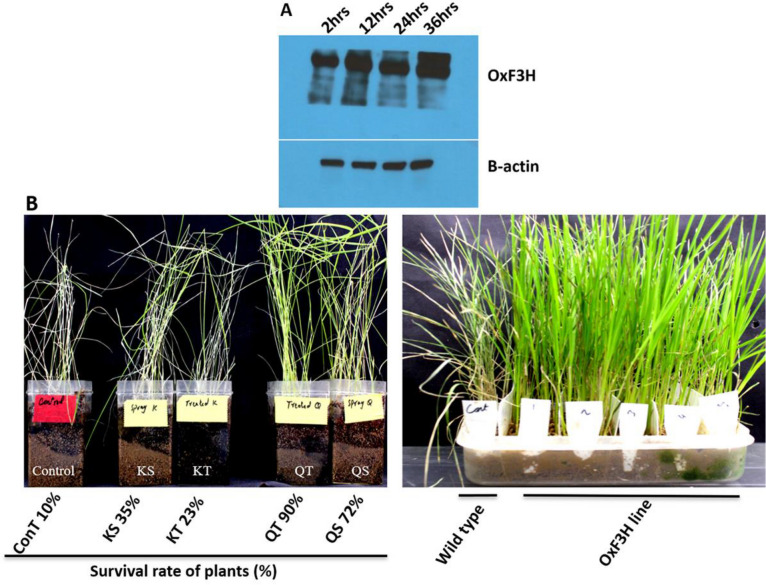Figure 3.
Effect of exogenous application of kaempferol and quercetin on survival rate of plants using susceptible line TN1 and survival difference between wild type and transgenic non-treated plants along with immunoblot analysis of OsF3H protein accumulation in transgenic plants. (A-upper) Expression of OsF3H protein during 2, 12, 24 and 36 h of WBPH infestation to transgenic plants analyzed by western blotting using gene specific antibody. (A-lower) β-actin of infected transgenic plants. The β-actin was run with the same sample on the same blot corresponding to the OsF3H blot. Figure (A) was more cropped because same sample was run in two replicates in separate gels with other samples due to limited time and resources and then transferred to one X-ray film and again replicated on another X-ray film to make it more clear (Figure S8). The blots were cut after the protein transfer to incubate with different antibodies to save time, reagents and materials. (B-left picture) KS is kaempferol sprayed, KT is kaempferol treated, QT is quercetin treated and QS is quercetin sprayed. Both the compounds were applied in 3 ppm quantity. The best result shown by quercetin treated and sprayed however, the result of kaempferol treated and sprayed was also better than control plants. (B-right picture) Represent the effect of WBPH on susceptible and transgenic line. Control was TNI susceptible to WBPH and the rest represent OxF3H line 1–5.

